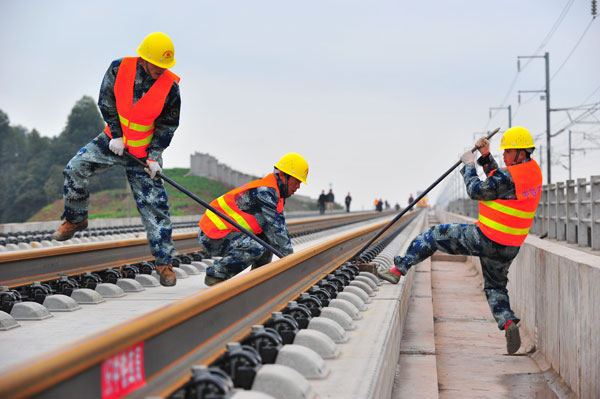SOEs required to lower debt ratios


The central government is requiring all State-owned enterprises to lower their average ratio of liabilities to assets by 2 percentage points by 2020 from 2017 levels, underscoring its commitment to promoting deleveraging to fend off financial risk.
An asset-liability constraint mechanism will be built for SOEs to strengthen supervision over their deleveraging moves, under a guideline issued on Thursday by the State Council.
Policymakers will establish "red lines" to notify enterprises in key sectors of alarming debt levels, the guideline said.
Firms with debt levels exceeding these lines will be put on monitoring lists and required to report reduction goals and deadlines.
The country will continue to promote market-based debt-to-equity swap programs, promote debt restructuring and help indebted enterprises find funding channels, according to the guideline.
The latest guideline sets requirements for all SOEs, covering a greater number of companies compared to the previous requirements issued by the State-owned Assets Supervision and Administration Commission earlier this year.
The commission required all centrally administered SOEs to lower their liability-to-asset ratios by 2 percentage points by 2020.
The more detailed requirements for debt-level control come at a time when authorities are placing greater emphasis on cutting leveraging ratios of debt-laden SOEs. In some sectors experiencing overcapacity, companies have been receiving easy credit from banks as they often enjoy support from local governments, thus heightening risks to the financial system.
Zeng Gang, a banking researcher at the Chinese Academy of Social Sciences said the guideline, which is expected to put leveraging ceilings on debt-laden SOEs, will be helpful in promoting the deleveraging process.
By the end of July, the asset-liability ratio among SOEs nationwide stood at 64.93 percent, which is 1 percentage point lower compared with the same period last year, said the National Development and Reform Commission.
Liang Zhibing, an economist at the commission's research institute, said the guideline provides a general direction for future efforts.
"The government does not set a specific one-size-fits-all debt level ceiling for all companies," said Liang. "The government is expected to take different measures based upon various financial performances of companies."
As some may question the possibility of a retreat of the deleveraging campaign amid downward economic pressure and rising trade tensions with the United States, no signs point to a possible reverse to earlier efforts, or to using stimulus measures to boost the economy, according to experts.




































